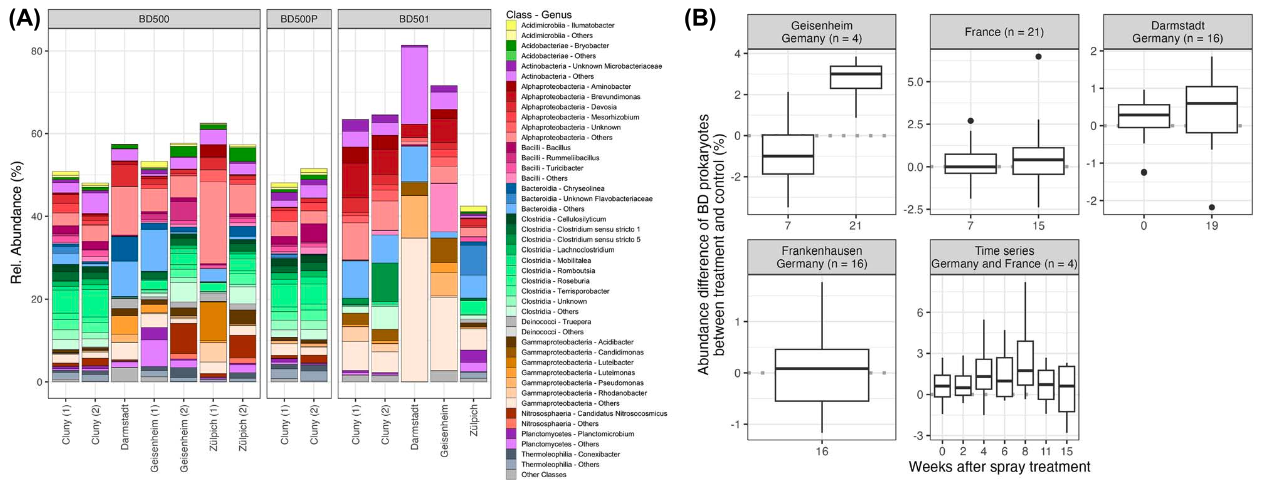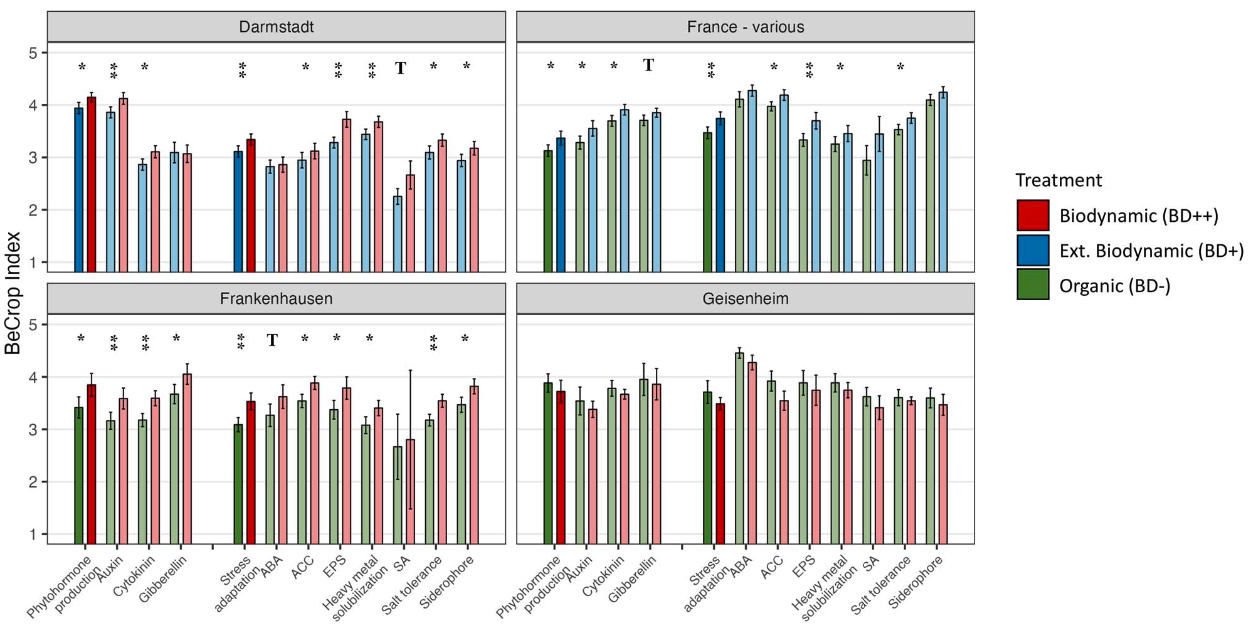This article goes into more detail on the study report by Milke et al. on the microbial soil community in both biodynamic and organic agriculture. Individual aspects are analysed in more detail.
In depth: Who is actually fertilising whom?
What characterises healthy soil?
Soils fulfil very different ecosystem services. These include, for example, water retention capacity, the ability to absorb and release nutrients and the ability to maintain these properties even under unfavourable weather conditions. What makes a soil healthy often also depends on the location, i.e. the climatic and geological conditions. A healthy soil is efficient, diverse and adaptable.
What makes up a healthy soil microbial community?
Soils are as diverse as their microbial communities, i.e. the totality of microorganisms such as bacteria and fungi. These communities differ greatly depending on the location. According to the results of the study, whether the soil is cultivated organically or biodynamically plays a subordinate role. Horn manure preparations (BD500) and horn silica preparations (BD501) harboured different microbial communities.
Figure 1: Example of the diversity and composition of soil bacteria at different locations (A) and differences in the abundance of soil bacteria found between the soils treated with preparations and the control plots (B). Positive values indicate a higher abundance in treated soils.
What are ASVs?
ASV stands for ‘amplicon sequence variant’. These are DNA sequences, in other words a genetic code. These codes can be matched to different bacteria and fungi and their functions in the soil. An ASV can be understood as a recipe from which a meal is prepared using the required ingredients. In the case of this study, for example, a specific ASV code becomes a growth hormone.
«We found an overall significant increase in ASVs in soil communities enriched with biodynamic preparations.»
ASVs are very precise; they can reflect the slightest genetic changes and, for example, distinguish between subspecies of the same type of mushroom. For this study, soil samples and samples of biodynamic preparations were specifically searched for ASVs that indicate plant-promoting properties.
How do biodynamic preparations affect plant growth?
The authors of the study state that the application rate of the BD500 and BD501 spray preparations is too low to have a direct fertilising effect on the plants. An improvement in the interaction between the microbial community and the plants is more likely.
Figure 2: Overview of possible growth-promoting substances and functions, broken down by location and agricultural system. BD++: 3 treatments each with BD500 and BD501. BD+: One treatment each with BD500 and BD501. BD-: Organically farmed soils without preparation application as control areas.
In their study, the team tested the hypothesis that the biodynamic preparations are an inoculation of the soil with PGPMs, i.e. soil organisms that can produce growth hormones as well as substances that can reduce biotic and abiotic stress. The biodynamic preparations should therefore help the plants to grow better and maintain their resistance to unfavourable conditions. The results of the study support this hypothesis.
The interaction between plants and microorganisms should be investigated further, in particular their effect on crop yield and quality. This has not yet been sufficiently researched.
Sources and further links to this article
- Original study: Milke, F., Rodas-Gaitan, H., Meissner, G., Masson, V., Oltmanns, M., Möller, M., Wohlfahrt, Y., Kulig, B., Acedo, A., Athmann, M., Fritz, J. Enrichment of putative plant growth promoting microorganisms in biodynamic compared with organic agriculture soils. ISME Communications, Volume 4, Issue 1, January 2024,ycae021, https://doi.org/10.1093/ismeco/ycae021

